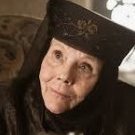Take a walk into the past – or into the future – with thrilling Bangkok Design Week
-
Recently Browsing 0 members
- No registered users viewing this page.
-
Topics
-
-
Popular Contributors
-
-
Latest posts...
-
2
-
65
Air Fryer
I've been following the Keto lifestyle for over six years. No related health issues, according to my yearly health checks. I agree! That's why I've adopted Keto as a lifestyle and not a 'diet.' Radically change one's eating habits for a few weeks, and we can call it a 'diet.' Live your life eating the same way every day, and it becomes a way of life. But I would love to see some peer-reviewed studies in medical journals to back up your statement about fat or protein. How much fat or how much protein is not healthy? This is Science. What are the numbers? If it's so, then there will be data to back it up, not just anecdotal evidence. -
7
Report Pattaya Car Theft: Indian Owner Claims Professional Scam
Rebirthing is alive and well in Pattaya -
4,451
LTR Visa is Now available for Long Term Residency
Hi, just to clarify - I have the LTR-H visa - unfortunately the 17% tax rate is only for salary income earned in Thailand. Foreign remitted income does not receive any tax break. (From BOI LTR unit). Also as I understand it, under the other LTR visas any income earned while working in Thailand, whether the salary is paid in Thailand or paid overseas, is taxable at the marginal rates in Thailand - it isn't considered "foreign income." It is considered income earned from working in Thailand. So it doesn't matter if this income is remitted into Thailand or not, it is still taxable at normal Thai tax rates when it is earned. It is only passive income (income that is not from working, such as interest, dividends, capital gains, etc) that qualifies for the foreign remitted income exemption. (From discussions with tax professionals) -
4
UK-Asylum crisis Court Orders Asylum Seekers to Leave The Bell Hotel in Epping
The " Pink Ladies " are a bunch of nasty, nasty, Far Right thugs 😀😀 -
19
Middle East Israeli Media Ignored Gaza Starvation—Is That Changing Now?
All you anti Israelis do have a fixation with Nazis . Are you a neo Nazi yourself ? We have quite a few on here
-
-
Popular in The Pub








.thumb.jpg.bc523c85a8d558dbc282dca7a2e602c9.jpg)
Recommended Posts
Create an account or sign in to comment
You need to be a member in order to leave a comment
Create an account
Sign up for a new account in our community. It's easy!
Register a new accountSign in
Already have an account? Sign in here.
Sign In Now